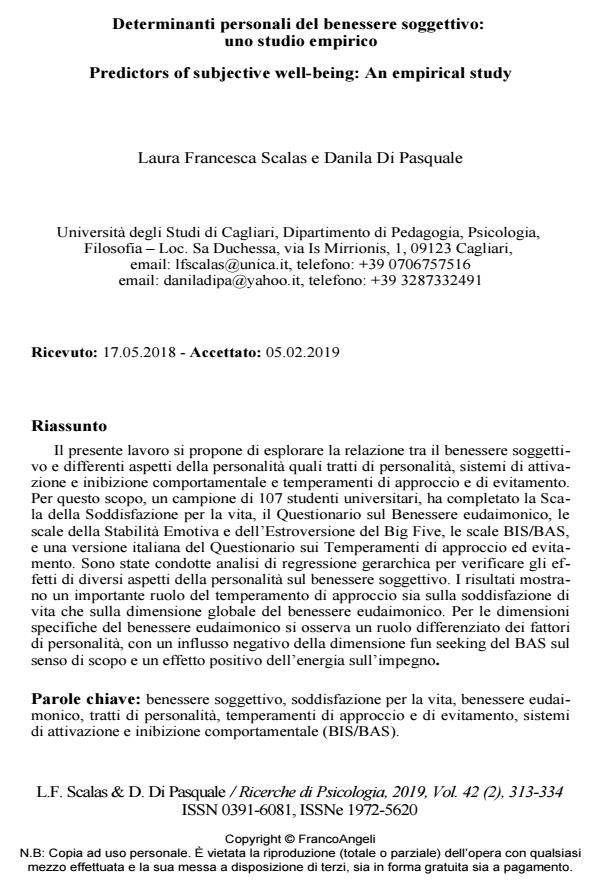Predictors of subjective well-being: An empirical study
Journal title RICERCHE DI PSICOLOGIA
Author/s Laura Francesca Scalas, Danila Di Pasquale
Publishing Year 2019 Issue 2019/2
Language Italian Pages 22 P. 313-334 File size 222 KB
DOI 10.3280/RIP2019-002005
DOI is like a bar code for intellectual property: to have more infomation
click here
Below, you can see the article first page
If you want to buy this article in PDF format, you can do it, following the instructions to buy download credits

FrancoAngeli is member of Publishers International Linking Association, Inc (PILA), a not-for-profit association which run the CrossRef service enabling links to and from online scholarly content.
This study aims to explore the relationship between subjective well-being and different aspects of personality, such as personality traits, behavioural inhibition and activation systems, and approach and avoidance temperaments. For this purpose, a sample of 107 University students completed the Satisfaction with Life Scale, The Questionnaire for Eudaimonic Wellbeing, the Emotional Stability and Extraversion scales of the Big Five Questionnaire, the BIS/BAS scales and a pilot Italian version of the Approach-Avoidance Temperament Questionnaire. Hierarchical regression analyses have been performed to verify the effects of various personality aspects on subjective wellbeing. Results show an important role of approach temperament on both satisfaction with life and global eudaimonic wellbeing. In relation to the specific components of eudaimonic wellbeing, a differential role of personality factors appeared, with a negative effect of the fun seeking dimension of BAS on sense of purpose and a positive effect of extraversion on effortful engagement.
Keywords: Subjective well-being, satisfaction with life, eudaimonic well-being, personality traits, approach and avoidance temperament, behavioural inhibition/activation system (BIS/BAS).
Laura Francesca Scalas, Danila Di Pasquale, Determinanti personali del benessere soggettivo: uno studio empirico in "RICERCHE DI PSICOLOGIA " 2/2019, pp 313-334, DOI: 10.3280/RIP2019-002005